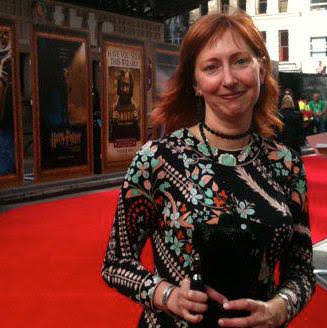Inside Netflix’s “The Twits”: Writer/Director Phil Johnston on Empathy, Evil, and Adapting Roald Dahl
Writer/director Phil Johnston, known for his work on Zootopia and the Wreck-It Ralph features, says. “Every character I’ve ever truly connected to has been on the outside looking in. Outcasts, dirtbags, and weirdos are my people.” It seems appropriate, then, that he brought beloved weirdo-specialist Roald Dahl’s book “The Twits” to the big screen. He took Dahl’s story of two hateful people, expanded it, and turned it into a social satire wrapped in an animated comedy that is equally creepy and comforting, making it perfect Halloween season viewing for the whole family.
The screenplay, which he co-wrote with Meg Favreau, centers on orphans Beesha and Bubsy, who suspect Jim and Credenza Twit of plotting to destroy their town. The Twits have created a dangerous, disgusting amusement park called Twitlandia, which is cobbled together from junk, and features rides like twirling, used porta-potties. The Twits use magical creatures they’re keeping captive called Muggle-Wumps to fuel their park, and Beesha and Bubsy want to save the Muggle-Wumps and the people of their beloved city from the Twits. Co-directed by Todd Kunjan Demong and Katie Shanahan, the film features new original songs by famed musician and Talking Heads frontman David Byrne.
The Credits spoke to Phil Johnston about being inspired by Roald Dahl, getting his musical hero to work on the film, and why a story about the battle between cruelty and empathy is so important for this moment in history.
What aspects of bringing Roald Dahl’s The Twits to life were the most exciting for you?
The Twits didn’t have to be redeemable; in fact, they shouldn’t be. Most of the adults in Dahl’s stories are either evil, ineffectual, or both, and I appreciated that. There are elements of the book that people love, but it’s a very episodic story, so creating something that paid homage to that but was also open enough to interpretation was really exciting to me.
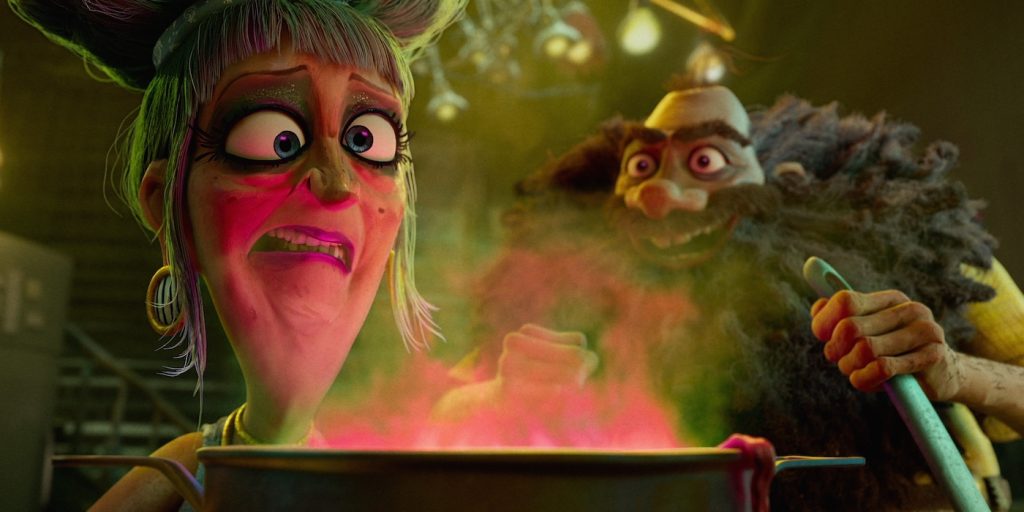
What was most challenging?
The biggest challenge with Dahl’s work is that they’re mean stories. The world is mean. The elbows are sharp. The comedy has teeth, so convincing collaborators we’re doing this on purpose was a big deal. The Twits are not going to change, and that’s the point. That’s what we as people have to realize. I still preach empathy. You can try to understand people, but don’t be so silly as to think they’re actually going to change, because a lot of times they don’t. I think that’s an okay message for kids. Don’t assume that just because you’re positive, cheerful, and nice, other people are going to be. The challenge was convincing people that’s actually what we’re trying to say with this. Also, the weight of Roald Dahl’s body of work, and making sure that I’m doing something that honors that, but also says something new, was really important to me.
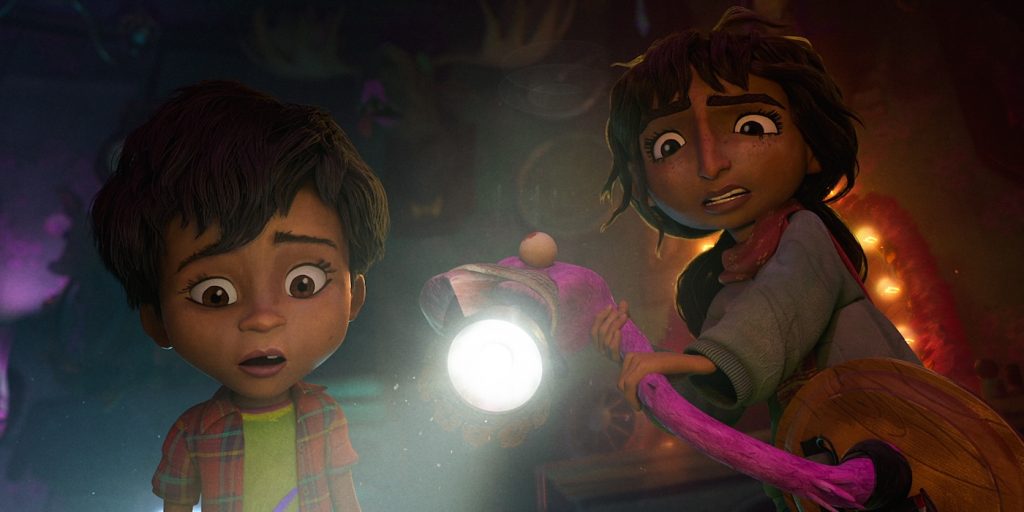
You started out as a journalist. In what ways would you say that influenced or impacted your work on The Twits?
Well, the town is called Triperot, and the news station is Tripewatch 7. I worked for a TV station in Omaha, Nebraska, called Newswatch 7, so that was a tip of the cap for my colleagues in Omaha. As a journalist, I loved doing weird feature stories. I ended up being the main news reporter at a station in Minneapolis, and it was a lot of covering crime and fires and such, but the times I got to do a story about something weird or offbeat, that brought me the most joy. In fact, Twitlandia was inspired by a story I did in Minneapolis. There was this 85-year-old guy in Aniwa, Wisconsin, who had a backyard circus. He had no teeth and would eat fire and do a tiger show. It was so janky and weird and great. I loved stories like that. As a journalist, I loved lifting up rocks and logs and poking at the grubs and creatures living under there, and that’s where I found inspiration for the house and Twitlandia in The Twits.
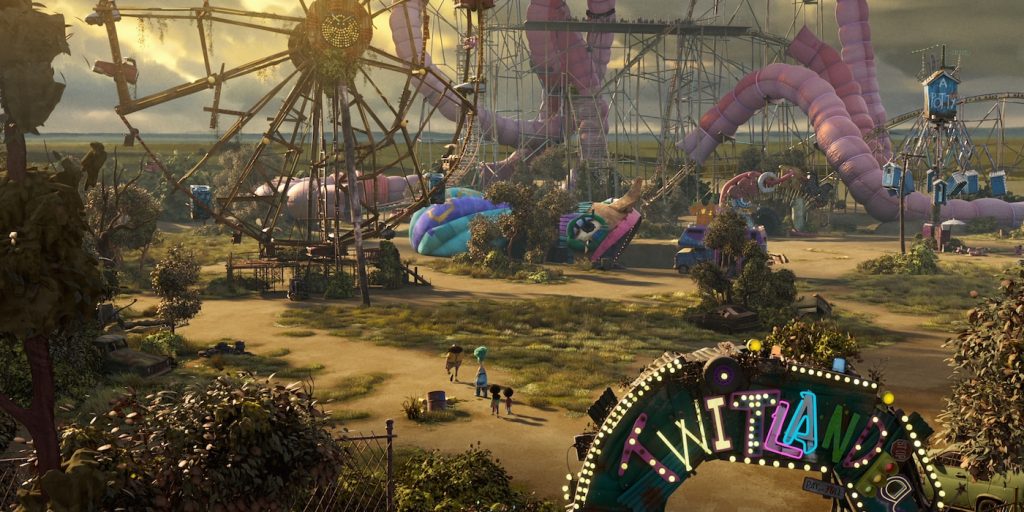
How did you develop the Muggle-Wumps? There must have been a number of permutations before what we see onscreen.
In the book, the Muggle-Wumps are monkeys in a cage in the backyard. Initially, we started down that road, then we started thinking it would be cool if they were magical somehow. They’re a species unto themselves, so they can have both traits of monkeys and also be magical. We went in the direction of The Muppets, and that didn’t feel right, but I loved the tactile nature of the fur, so we leaned into that. Then, being more magical, we came up with the idea of them being upside down, which is the upside-down monkey circus in the book. We then came up with the idea that maybe their emotions are so potent, and their tears are so powerful, that they can serve as a fuel source. There was a lot of bouncing ideas between the story and design departments, where it would go back and forth, feeding on each other’s ideas. It was a wonderful collaboration, and we built on top of each other’s ideas. Peter de Sève, the lead in character design, did a lot of the Muggle-Wump stuff, as did Bobby Chiu, who is a great creature designer.
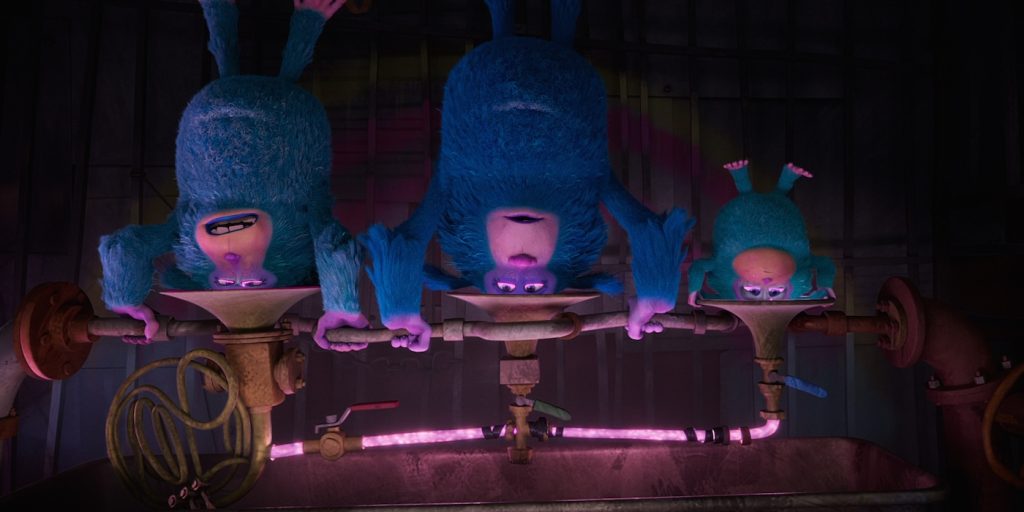
David Byrne, a musician you’ve been a fan of since you were a teenager, contributes songs to the film. How did you connect with him and get him to do your movie?
I wrote him a letter, which, in part, said, “Dear David, this is a fan letter as much as it is an invitation to collaborate. You’ve been the most consistent source of musical joy in my life since I was in junior high school. That’s when I found/stole my brother’s Speaking in Tongues album. Mere proximity to that record made me infinitely cooler and more worldly than I otherwise might have been.” Then I go on to say, “All these years later, I continue to return to your work for inspiration in my own career as a filmmaker. So naturally, when I conceived of a musical episode in my adaptation of Roald Dahl’s book The Twits, my first thought was, Wouldn’t it be cool if David Byrne would write the music?” At the time, The Twits was going to be a series, and the finale was going to be a musical, so we had a meeting and really hit it off, and he thought he might be able to come up with something. What he did was amazing. He really dug way down into the characters, and he was an absolute joy to work with. I remember when I got just an iPhone demo of him playing the banjo for the song “Not Like Everyone Else,” just him and a banjo. I was sitting outside around my fire pit, and I just got chills. I just remember thinking, “This is a dream.”
There’s a great quote in the film: “ Empathy and naiveté, after all, are not the same things.” This is a very important topic to discuss right now.
It’s sadly very topical, and will be for a long time, I think. My dad was an Episcopal priest, and so I grew up with that swirling around the periphery, the notion of kindness and forgiveness. And while I’m not a religious person, I think it’s always been important for me to try to imagine what someone else is going through. I think there’s a lesson our kids learn at the end of this movie. They leave the Twits for dead. The Twits die at the end of the book, where they’re going to melt and shrink, and that’s that. We can cheer that, until you realize, well, that’s awful. That’s not the answer. Don’t expect them to change, but don’t sink to their level. Don’t become evil yourself. That’s not going to do any of us any good. I think we are in a moment where we have to remember empathy is not weakness, nor is it naiveté. It’s human decency. Let’s lead with that. I don’t want to be preachy, and this movie is a big, silly comedy, so let’s not pretend it’s anything else, but I hope at least people will take that message from it, that it doesn’t do any good to become rotten ourselves. There’s enough of that going around. Let’s be kind. Lead with kindness.
The Twits is streaming now on Netflix.
Featured image: The Twits. (L to R) Margo Martindale as Mrs. Twit, Johnny Vegas as Mr. Twit, in The Twits. Cr. Courtesy of Netflix © 2025


